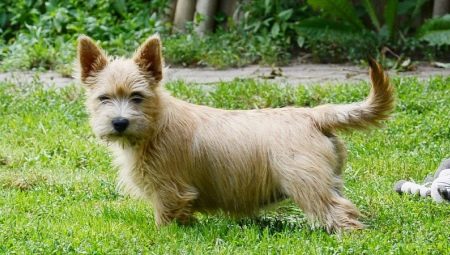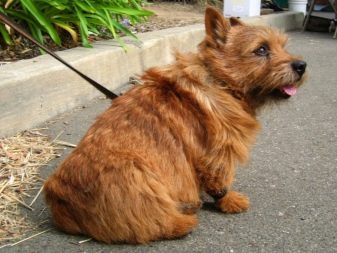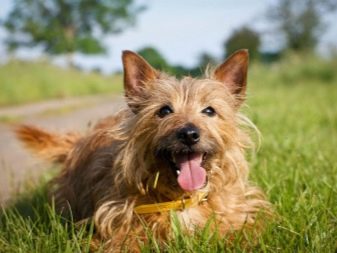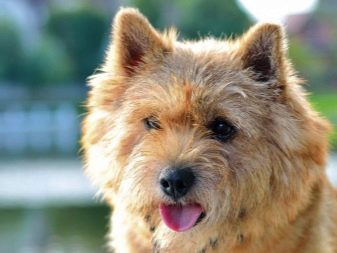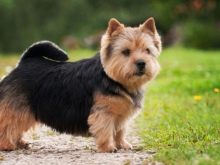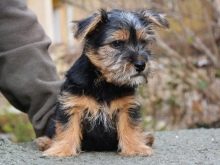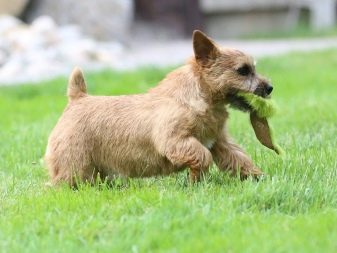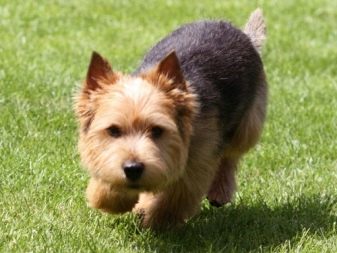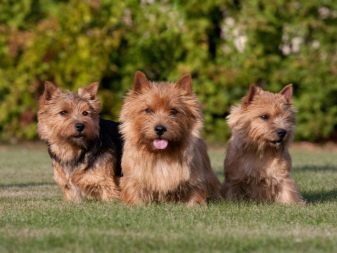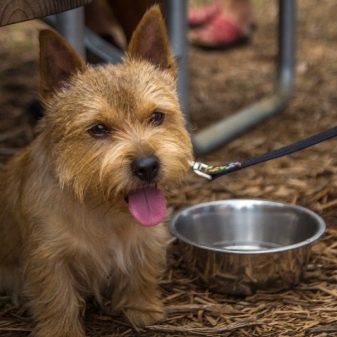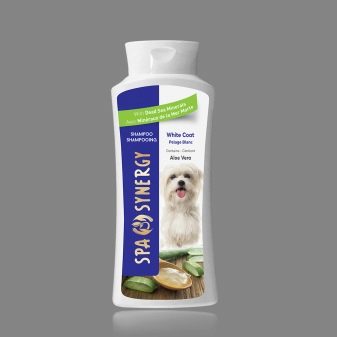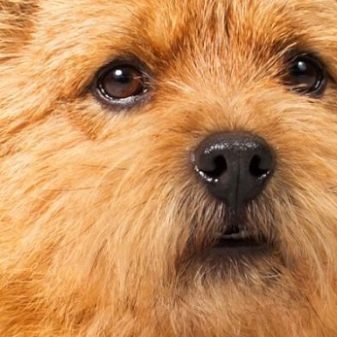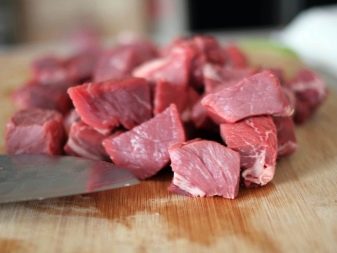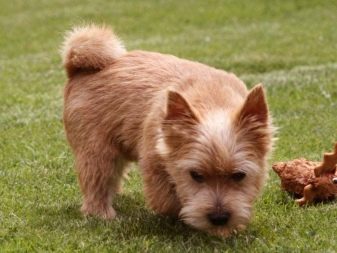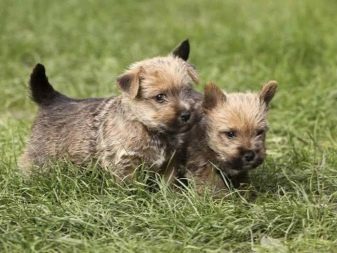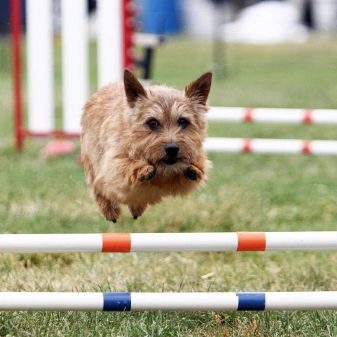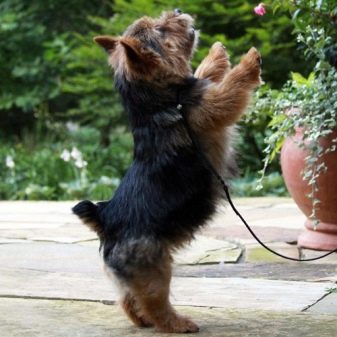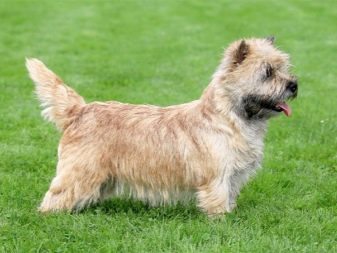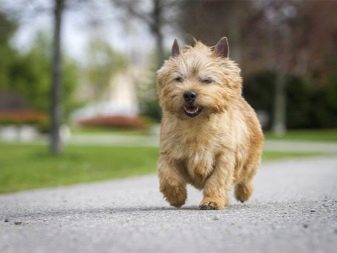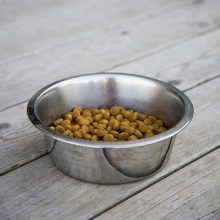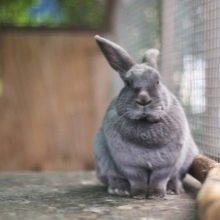Charming Norwich Terriers are representatives of the famous English hunting breed. These animals are distinguished by a cheerful and positive temper. They are suitable not only for hunting - norwich terriers are also great companions. Today we will take a closer look at these interesting pets and find out how to properly care for them.
History of origin
Experts believe that representatives of this breed of dogs appeared not later than the XIX century in Norwich (or Norwich), located in the east of England. Initially, these small pets were exploited as a good workforce: they actively participated in the hunt for game that lives in burrows, and also engaged in the extermination of rats that were kept in food stores. Already at that time, the Norwich Terrier was a great companion.
Researchers have not been able to find out exactly which breeds were involved in the selection of Norwich Terriers. However, according to popular belief, they are direct descendants of Irish terriers or trampington terriers, which in our time can no longer be found.
In 1932, the English Kennel Club recognized the Norwich Terrier breed. At the same time, certain demands were made on its representatives. Allocated 2 main types of dogs. For a long time, the debate about which type is more suitable for exhibitions did not subside. From the beginning of the 1930s, breeders tried their best to give as many noticeable differences to different types of these dogs as possible.
In the course of painstaking work, two separate breed categories were identified: Norfol and Norwich.
Breed description
Norwich terriers fit the description of ordinary burrow hunters. They are distinguished by a squat structure. They have a strong skeleton and chest of medium width.
Among the representatives of this English breed, the smallest individuals can weigh no more than 5.2 kg. The growth of the smallest dogs is usually no more than 26 cm. At exhibitions and contests, specialists do not lower their marks if a four-legged participant has “battle marks” left over from the hunt. This is usually damage to the ears or skin of the animal. Of course, the estimates will not be reduced if the available injuries do not affect the usefulness of the animal.
There are recognized standards that list all the characteristics of these pets. Let's get acquainted with them in more detail.
- Since the coat of these pets is thick and solid, their head looks more voluminous and larger than it actually is. Like other well-known terriers, the Norwich has a spacious skull with a slightly rounded tip. The forehead looks flattened and dramatically "flows" into the back of the nose. Closer to the tip of the nose, the face of these pets is becoming more and more narrow.
- Lips in pedigree individuals will always be thin and tightly pressed to the jaws. The teeth are large, upright. Fangs are closed by a strong lock, forming a standard scissor bite.
- The nose of these dogs is miniature in size. It is characterized by a noticeable sensitivity and is mobile.
- The eyes of the Norwich are oval, set at a noticeable depth, which is a protective feature of the building.The color of the iris is usually close to dark brown. The look of a Norwich Terrier is always interested, expressive. In their eyes are seen the notes of positive and some cute little laugh.
- The ears of purebred breeds are characterized by a triangular structure. They are medium in size and can be exclusively standing - other options are not allowed by the standards. In the course of work, the ears are always noticeably tense and “look” forward. If the dog is in complete peace of mind, the ears will be slightly retracted.
- The body of a small hunter is very strong, has a rectangular structure. The neck is firm but not too long. The nape is mild, the suspension is completely absent. Thoroughbred Norwich breeds should not be too broad, as this will seriously interfere with burrowing work.
- The ribs of the norwich terriers are spring-loaded and strongly drawn back.
- The sternum is slightly lowered to the line where the elbows are located, or slightly lower. Well developed shoulders of animals. The back is straight and smoothly turns into croup with okozy and lower back, which is not very pronounced.
- The limbs of purebred dogs do not differ in great length - they are short, straight, a little thickish. The elbows are adjacent to the sternum, the femoral part is strong and is characterized by moderate length. The forelimbs are more muscular than the hind ones.
- The paws of the Norwich are large, have well-developed strong claws. The pads are well filled, due to which the representatives of this hunting breed are capable of excellent digging.
- The tail is flush with the back of the dogs or located slightly higher. It can be either intact or stopped - both options are allowed. If the tail is not docked, it should be strong and straight. A slight bend is allowed. If, however, this limb was arrested, it should be extremely straight and be a continuation of the spine line.
Norwich coats are envied by representatives of many other similar breeds. In small English hunters wool has a high density and a good layer of undercoat. On the head, muzzle and ears, the coat is smooth and shortened. To the touch it looks more like a gentle and pleasant silk.
The neck and scruff of the Norwich Terrier are decorated with a luxurious collar that looks like a good lion's mane. It is assembled from a guard hair of considerable length. The Norwich muzzle has a slight beard and thick, pronounced eyebrows.
The color of Norwich coat may vary considerably. The standards allowed are colors:
- red - monochromatic coat color, can vary from light red to dark red;
- zonary - is a combination of red and black shades of wool (proportions may vary);
- black and tan (the dominant shade) is a uniform black, there are red-brown markings in the region of the extremities, muzzle, abdomen, chest.
In dogs of the breed described, wool cannot have a white color. Even small white spots are not allowed by current standards.
There may be small marks or scars of light tones that the dog acquired in the process.
Character
As in the case of other breeds, it is possible to acquire a puppy of a Norwich Terrier only after having familiarized yourself with all the features of its character.
Norwich are active and highly motivated pets. They are hardy and rarely fool around, even though they look funny. This type of pet is recognized as a great helper in the hunt. In addition, it will turn out a great friend who will always be positive. Norwich terriers are very much attached to their owners and differ incredibly good-natured disposition. Communication with a person is true happiness for them.
You can take this cute and playful dog without fear into a family with children.Norwich will surprisingly quickly find a common language with younger members of the family and figure out how to have fun together. Such leisure time will surely be accompanied by incessant scuffling, legwork and enthusiastic squeals - you can forget about silence.
Once in the new house, a purebred English puppy quickly fascinates all family members. In Norwich people fall in love at first sight. These pets do not demonstrate zealous behavior, so they can live on the same territory with other pets without any problems.
Such a neighborhood will not strain the dogs of this breed, they will not show their ardent discontent.
If you want to get such a nice and funny pet, then you need to know in advance that Norwich are not only very active, but also very curious. At times, they can be very noisy, bringing real "chaos" to the house. Dogs of this breed do not hesitate to give voice. The reason for this can be both the joy of the dog, and his anxious mood. Often, Norwegians put their teeth into the business and are taken to gnaw absolutely everything that they liked and aroused interest.
Despite the fact that Norwich Terriers are small-sized dogs and have a fervent temper by nature, they are not without nobility and prefer to demonstrate independence more often. The hunting qualities of these animals are excellent, so during walking they are better not to lower the leash. Chasing a passing cat, a Norwich can get so carried away that it will stop responding to the host’s commands. As a result, the animal may be lost.
Norwich are very vigilant pets, so they make amazing, reliable guards. True, the activity of such a terrier can noticeably suffer a house territory - representatives of this English breed are big fans of digging. During the hunt, they are able to dig up even those burrows that differ in very great depth. For this reason, at home, such dogs will be diligently digging up the whole area up and down, getting great pleasure from this process. In this case, the energy of the animal will be spent a lot.
These terriers are distinguished by high jumping ability. Meeting the owner, such dogs will try to jump on him, demonstrating incredibly joyful emotions.
Such behavior refers to bad form, and it is better to wean the pet from such a habit from puppyhood.
Advantages and disadvantages
Before you go shopping for a purebred puppy of the Norwich Terrier breed, you need to weigh the pros and cons of these pets.
First, consider how good these charming little hunters are.
- Norwich - sociable creatures who like to spend time in the company of man. That is why they make excellent companion dogs.
- Such pets are friendly and without aggression to other pets. They also communicate with children without malice and unnecessary caution.
- The intelligence level of Norwich is very high. They are quick-witted and intelligent, quickly master new teams.
- Norwich immunity is considered quite strong. They rarely get sick, especially if they are properly cared for.
- Norwich terriers can live seamlessly in the conditions of an ordinary city apartment. This is an ideal solution for people who want to have a dog, but who do not have much room for keeping a large breed.
- These dogs are not jealous, therefore, unnecessary conflicts with pet-neighbors for this reason usually do not arise.
The advantages of this breed of dogs are significant. For them, Norwich is chosen by many people who want to have such a kind and positive four-legged comrade. But there are a Norwich Terrier and a number of disadvantages to which you need to be ready.
- The temper of these dogs is restless. In rare cases, they may even show aggression.
- Norwich can suddenly rush on other animals.
- If you want to feed such a dog with ready-made feeds, then you will have to purchase only expensive products of high classes. As a result, the maintenance of such a pet can seriously hit the family budget.
- Norwich terriers should not be let off the leash. You can only walk with him. Otherwise, the pet may go into a race for the victim chosen by him, after which it can no longer be found.
- On the territory of Russia to acquire a puppy of this breed is not the easiest task.
Lifespan
Norwich Terrier is a healthy breed, distinguished by good immunity. Many breeders who plan to have such a pet are interested in how long they live. Typically, these cute "British" live at least 13-15 years. Much in this depends on the owners.
If the animal is properly cared for and kept in good conditions, the dog can live longer.
Conditions for the maintenance and care
Dogs of this English breed are recognized as universal in matters of care and maintenance. They feel very good and comfortable both in a city apartment and in a private house. For a chain or captive content, these good-natured pets are completely unsuitable. When the owner is not nearby, a purebred Norwich will be subjected to serious stress, which ultimately will lead to bad behavior of the animal as a whole.
Norwich terriers are active and mobile pets, so they cannot be left without walking. Walking with such a pet should take at least 2-2.5 hours. Experts strongly do not recommend walking these pets without a leash.
These dogs need proper care. The main problem of Norwich - thick wool, consisting of two layers. It is important to carefully comb it out 2-3 times a week. This should be done in the direction of hair growth. To this end, it is recommended to purchase a small wooden comb with long and sparse teeth. Combs and brushes made of plastic are undesirable because they will electrify the dog's coat very much. Removal of dead hair due to this much more complicated. In seasonal periods, when pets shed, they need competent trimming.
Grooming is advisable to trust specialists. Independently conduct such procedures are recommended only if you have experience in this matter. Haircut thoroughbred hunters must be carried out according to a certain scheme.
It is important to monitor not only the state of the hair of such a dog, but also the timely implementation of all necessary hygienic procedures.
It is often not recommended to bathe Norwich terriers, although it is difficult for owners of small hunters to stick to this recommendation: Norviks like to dig and dig, and actively explore all the surroundings. Because of this, their wool layer is very quickly contaminated.
Bath procedures should be resorted to only when necessary. If this is done too often, the natural fat balance of the animal's skin can be seriously affected. There is nothing good about it. To remove all the dirt that is on the surface, it is desirable to use a special dry shampoo. It is rubbed into the fur of the animal, carefully combing it at the same time.
Any hygiene products released for humans are not suitable for dogs. Often they lead to violent allergic reactions. For water treatments, you should choose high-quality zooshampun from a famous brand. It should give preference to special products designed specifically for hard wool. Alkalis and acids in the composition of the shampoo for the dog should not be much. In cold seasons, experts advise to use special balms-conditioners. Upon completion of the water procedures, the dog's fur should be thoroughly wiped with a dry towel, and then dried with a hairdryer (the temperature should not be too high).
Weekly it is necessary to carefully examine the ears of terriers, especially after the hunt.It is necessary to clean the ears of dogs at least once a week. To do this, you need to moisten a cotton pad in a special tool that can be purchased at any veterinary pharmacy. Do not wade too deep into the ear canal (more than half a centimeter). Gently wipe the auricle until the cotton pad is completely clean. Only after that it will be necessary to wipe the eye dry, using only a lint-free piece of cloth or a tampon.
It is very important to monitor the condition of the eyes of the norwich terrier. Upon completion of walks in windy conditions, wipe them as gently as possible with a cotton pad moistened in warm and boiled water beforehand.
If you notice that there are purulent discharges at the corners of the eyes, then you should visit with your pet veterinarian. Self-treatment at home is not worth doing - trust it to a professional. Eye drops can only be used as directed by a specialist.
The mouth of these dogs is their weakness and vulnerable point. Since the teeth sit in the gums more closely than in other cases, it is necessary to resort to a thorough but careful cleaning weekly. To get to remove all the soft plaque from the teeth, it is necessary to use a special zoo. Especially popular for pasta animals with different flavors. This tool is applied to the toothbrush, and then remove all the remnants of food, making sweeping movements. In pet stores you can find very small nozzles per finger, with which you can also easily and without unnecessary inconvenience to clean dog teeth.
If you have noticed an unpleasant smell from the dog's mouth, this will indicate that a tartar has formed on the teeth. You should not fight with it yourself. Contact a specialist who can rid the pet of a similar problem.
The claws of newbie terriers do not need special attention, but the owners should still buy a special claw cutter. If the pet's claws do not have time to tap on hard surfaces, they should be carefully trimmed as they grow. Carrying out these procedures, it is very important not to accidentally damage the "living" half of the claw where the blood vessels are located. To smooth the sharp edges of the claws, use a nail file. It is also possible to remove the burrs.
It is recommended to use tools with a small index of grit, because they are more suitable for grinding.
What to feed?
Norwich terriers, as well as representatives of other well-known breeds, must eat properly and appropriate products. These little hunters are not too demanding and capricious in the choice of food. They suffer from food allergic reactions in rare cases. Norwich is allowed to feed both ready-made industrial feed and high-quality natural products of the first freshness. The combined menu is not always suitable, because it can cause a number of problems associated with the digestive system of the animal. Experts do not advise resorting to such feeding.
If you decide to feed a purebred dog ready-made feed, then worth buying only premium and super premium options. Perfect-holistic feed, in which there is a high content of vitamin complexes and minerals. Dry granular food will help to clean the teeth of the animal, thereby avoiding the formation of tartar. Wet food is more suitable for young puppies or lactating females, as well as older individuals.
Many owners prefer to feed Norwich Terriers not with ready-made feeds, but with natural products. In this case, the basis of the diet should be meat. Of the total amount of food, it should be at least 60%. The ideal solution would be raw or boiled chunks of beef. The presence of a small layer of fat. The presence of tendons and cartilage is not prohibited. Great combination - meat and boiled sea fish.The latter should not be with bones.
Experts advise from time to time to dilute such a diet with offal, such as raw heart or cooked beef liver.
It is necessary to bring in the diet of these pets a variety of cereals. Grains are allowed: buckwheat or rice. The latter can be diluted with finely chopped vegetables or even fruits. Everyday eating vegetable oil will have a positive effect on the skin, claws, and hair of Norwich. A serving should not be more than 1 tablespoon.
In the diet of terriers should not be:
- meat with a high percentage of fat (pork or lamb);
- high carbon products;
- river fish (in any form, this product is prohibited);
- products made from wheat flour;
- raw chicken meat;
- berries with pits;
- spice products;
- legumes;
- tubular pits;
- whole milk;
- muffins and sweets in any form.
In a dog bowl should always be fresh and clean water. It can be bottled or running, but infused for 6–8 hours.
It is not recommended to give boiled water to Norwich, because over time its use can provoke the development of urolithiasis.
Health and Disease
Norwich terriers are pets with excellent health and strong immunity. They are resistant to colds. If you keep such an animal in suitable conditions and feed it with high-quality food, you will not have to constantly visit the veterinarian with it.
Although these dogs rarely get sick, Yet there are some ailments that occur in such terriers more often than others.. These include all sorts of pathologies related to the respiratory system, and such a serious disease as epilepsy. Some individuals of this breed suffer from brachycephalic syndrome.
The pledge of the pet's long life is vaccination on time. The first vaccination needs to be done when the puppy is 2 months old. You will need subsequent vaccination in 2 weeks. At 6 months, purebred Norwich is vaccinated against rabies.
At the same time, the complex vaccination of a pet against parainfluenza, the plague and parvovirus is not forgotten.
How to raise?
In a “pack”, a Norwich can take a leading position, so from the first days of the appearance in the new house this pet needs to establish all the basic rules. First you need to separate the territorial boundaries within which the animal can be. If it seems to you that the bedroom or the nursery is not suitable for visits by terriers, you must make it clear to your pet that the closed door is an insurmountable obstacle that you must stop at and wait for your master.
It is important to instill good dog manners. When you walk with your pet, immediately stop absolutely any “races” for pigeons or cats. Do not let your pet jump on strangers. Ideally, a Norwich should not pay any attention to those passing by it. Thus it will be possible to avoid a huge number of conflict situations.
Do not interfere with the pet to communicate with their relatives. Early socialization is required by representatives of this breed. Norwich terrier desirable to pick up more friendly and kindly friends. Age and sex of pets do not play any role.
The level of intelligence in these animals is high, so they are easy to train. In the course of the tutorial, the host must observe consistency and be patient. The dog may begin to stubborn, despite the fact that he wants to please "his" man.
Call in your favorite interest in new teams - then the training will be simple, fast and exciting. Motivate the little hunter, using only good praise and delicious treats.
In the course of training and training of a norwich terrier (it doesn't matter if it is a puppy or an adult dog) you shouldn’t be rude - shouting or resorting to physical punishment.No such good host behavior will end. As a result, the relationship with the dog will be ruined, and it will not treat the person as his friend and ally.
The most common problem of the representatives of the described breed is the response to the call of the owner, if the pet has become very interested in something. A nickname is the last thing to hope for: the terriers simply won't pay attention to her. It is advisable not to go far for a long time from such a dog. You need to use a special leash-roulette, especially when you are in places with heavy traffic.
Norwich - frequent participants in various competitions: on freestyle, agility and other kinds of "dog" sports. If you want your dog to participate in such events, you need to hire a professional trainer.
Regular training and good rewards for correctly executed teams will be the key to the success of the future four-legged champion.
Nickname list
Charming Norwich Terriers are suitable for a variety of nicknames. The name of the puppy must be taught first thing. Since it will have to be called many times during the day, it is better to give preference to a clearer and shorter version, easier to pronounce. Choosing a nickname for your beloved doggie, you should pay attention to its external data and character. These parameters will allow you to choose the most appropriate name for your pet, which will be "to face" him.
So, for girls of the Norwich breed, such interesting nicknames are perfect:
- Erika;
- Jesse;
- Wendy;
- Lucy;
- Tuffy.
If you have a terrier boy, then you can choose a good name from the list below:
- Alto;
- Rem;
- Gray;
- Chris;
- Jay
Useful tips and tricks
In the content of such a cute pet should take into account some tips and advice from experts.
- Norwich often exaggerate their importance, because of what they can enter into a fight with larger and more powerful brethren. In such situations, only a professional canine or extreme measure will help - male castration.
- Walking a Norwich is recommended in a company with burrowed terriers. These pets are used to nibbling each other's faces. Representatives of other breeds can make such gestures wrong.
- Pork is a forbidden product for these dogs. And it's not just her fat. Such meat is completely absorbed in the body of Norwich, so you can not give them such products in any case.
- Pet nutrition must be monitored. Portions should not be too large, since norviks are prone to obesity, which entails a host of other serious health problems.
- It is possible to train a puppy of a norwich terrier to the tray. But this does not mean that after that the dog will not need to walk.
- Norwich terriers are not recommended to keep in the same area with small rodents or rabbits. Such pets can be perceived by dogs as an object for hunting.
- Norwich terriers are gaining more and more popularity, the coat color of which is cheeprachny. If you pick up such a pet, pay attention to its back: it will have a dark shade, and the belly and paws will be wheat or brown.
- In a dwelling for such a pet, one should single out his own corner where his cozy sleeping place, favorite toys, and also bowls for food and water will be located.
- It is advisable to systematically visit a veterinarian with such a dog, despite its good immunity. In this way, you can bypass many possible ailments that your pet may run into.
- The process of training and training must begin with the first days of the puppy in a new house. Do not delay the time and do not postpone it for “later”, because in time the dog will be worse than the training process.
In the next video interesting facts about the Norwich Terrier breed are waiting for you.
